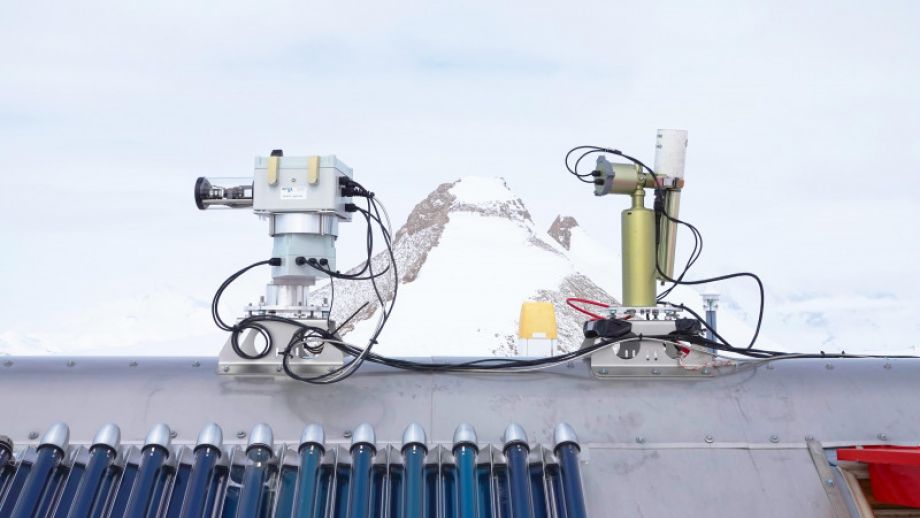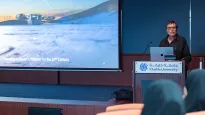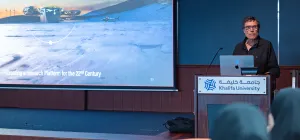How Does Data Collected at PEA Get to Where It Needs to Go?

At PEA a lot of scientific instruments are continuously collecting data for researchers working at different universities or research institutes in Europe and around the world. But have you ever wondered how these data find their way to the scientists who need it for the reserch projects?
We can divide the data repatriation in three categories:
- Data collected almost continuoulsy and constantly sent to the research institute in near real-time
- Data that are sent once per day
- Data that are collected from the instrument once a year by a scientist or technician
An example of near real time data collected is the amplitude and orientation of Earth's magnetic field. A variometer and a proton-magnometer housed in a specially-constructed shelter located about 500 metres from the station send their data via fiber link to the station, where it is then forwarded via satellite to the Royal Meteorological Institute in Belgium every second!
Other data from various instruments around the station are transmitted to a data centre inside the Princess Elisabeth Antarctica, where they are stored until they can be transmitted. So as not to disturb activities of people at the station, these data are transmitted every night to a datacenter in Amsterdam. The data are then forwarded to the various instutues who are colelcting data at PEA.
The last category of data repatriation are devices that store all their data within the instrument. Scientists or IPF staff visit the instrument yearly, do an inspection to make sure it is orking properly, and download the data. At the moment, this is the case for most of the instruments that have been set up in the field, far away from the station.
Always eager to find better solutions, IPF is currently investigating ways to conduct data downloads from instruments in the field. Data will be sent with a low power point-to-point radio link to PEA. From the station, these data will be forwarded via satellite to the respective institutes who need the data. We expect the first project using these links to perform the data repatriation soon.
Scientific projects providing real time data transmission:
- Geomag (Royal Meteorological Institute of Belgium)
- AWS in the field (IPF, Swiss Federal Institute for Forest, Snow and Landscape Research (WSL), UCBoulder, not via PEA)
Scientific projects transferring data every day each evening
- Brewer ozone spectrometer (Royal Meteorological Institute of Belgium)
- Ceilometer (KULeuven)
- Geomag (Royal Meteorological Institute of Belgium)
- GPS (Royal Observatory of Belgium)
- Max Doas (Royal Meteorological Institute of Belgium)
- MRR (KULeuven)
- Seismometer (Royal Meteorological Institute of Belgium)
- GPS (University of Luxembourg)
Instruments delivering data once per year:
- AWS (EPFL)
- INP filter (TROPOS)






















